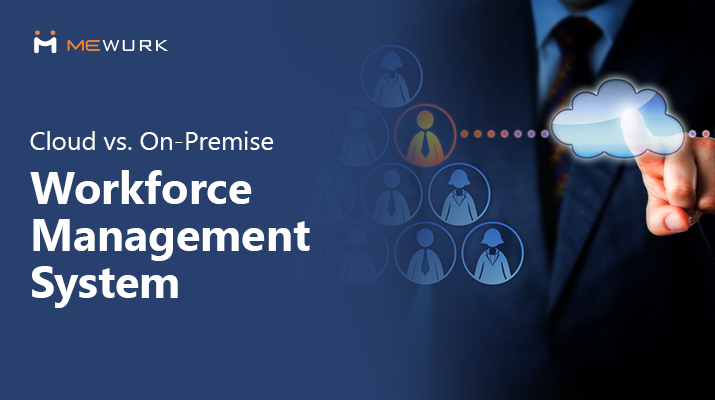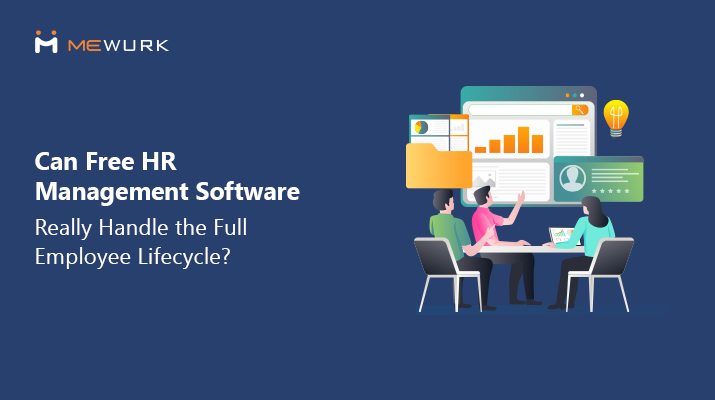
Can Free HR Management Software Really Handle the Full Employee Lifecycle?
HR expenses are among the biggest operational burdens for startups. Many companies see this as a reason to deprioritise HR functions in their budgeting, assuming it would keep overheads low. But is that doing any good? The truth is, cost-cutting in HR is the main reason for gaps and inefficiencies in hiring, onboarding, and managing employees effectively.
But what can startups, that don't have the budget to run a dedicated HR team or invest in the best HR management software, do? Should they settle for subpar processes and outdated employee management systems? That should happen under no circumstances. That's why, in this blog, we explore free HR management software options to find out whether they can truly handle everything from hire to retire, the full employee lifecycle.
What Is the Employee Lifecycle?
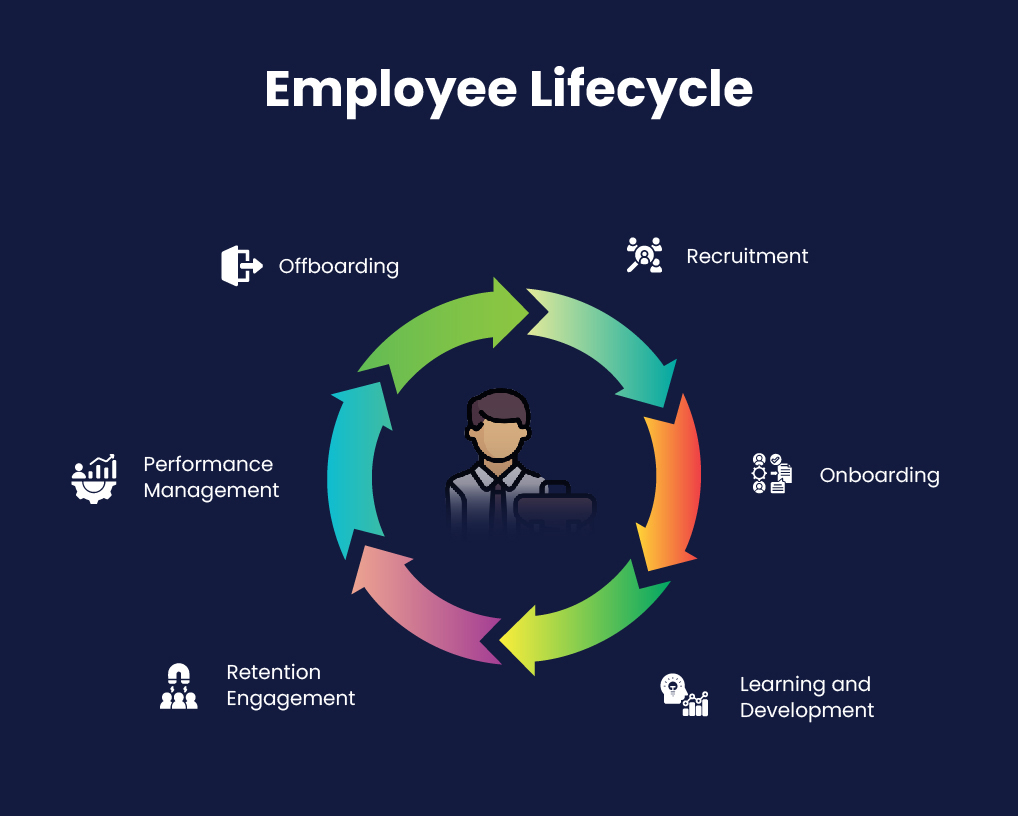
The employee lifecycle refers to the journey an employee takes within an organisation, from recruitment to their eventual exit. It begins with hiring and continues through onboarding, development, retention, and offboarding.
To verify whether the HR software for small businesses you choose supports every function within the employee lifecycle, we will need to examine each stage individually.
Recruitment
This is the very first stage in the employee lifecycle. Through recruitment, an individual becomes a part of the organisation. The process kicks off when the need that needs to be filled is identified by a company, and this requirement is communicated to the HR team.
Based on the skill requirements shared by the relevant operational department, the HR team prepares a detailed job description (JD) and posts it on job portals such as Naukri or Monster. Ideally, these job portals are integrated with the organisation's workforce management platform, preferably one that includes an Applicant Tracking System (ATS).
When candidates view the job descriptions and express interest, the ATS in the company's paid or free HR management software captures their applications, screens profiles based on preset criteria, and helps streamline the shortlisting, interviewing, skill assessing and further communication processes.
Onboarding
Once an applicant is hired, they are not simply left to figure things out on their own. They are onboarded into the company through a structured process involving orientation, guidance, and support.
Various online employee management tools are used to facilitate the onboarding process. A good example is an HR document management system which allows new hires to complete all the initial paperwork and sign documents digitally.
By way of digitalising the processes through cloud-based HR solutions, organisations are better positioned to prevent confusion for new employees regarding attendance, leave, shift, payroll, etc. Likewise, they can carry out the orientation and onboarding processes with the greatest ease.
Learning and Development
This stage focuses on enhancing employee skills and knowledge throughout their tenure with the organisation. Progressive companies refine this process through learning management systems (LMS) to share training materials, courses, and development opportunities with employees and paid or free human resources tools to track the progress, identify skill gaps, and recommend suitable training programs.
Every employee is different. Studies have shown that there is no real use in giving common or one-size-fits-all training to everyone. By creating personalised learning paths based on one's role requirements and career aspirations, it is possible to bring more engagement, relevance, and measurable impact in learning and development efforts.
Retention/Engagement
At this critical stage, organisations direct their focus towards keeping their valuable employees satisfied and motivated. Here, they can rely on the sophisticated tools in their cloud-based HR software platforms to gather feedback through surveys and sentiment analysis.
Speaking of retention, one great tool to support it is a performance management system. These systems can integrate custom recognition programs of their respective organisations and enable peer-to-peer appreciation and manager acknowledgements of achievements.
When there is a decrease in employee engagement or top performers unreasonably inexplicably miss career milestones, advanced HR analytics can alert HR teams about potential retention risks.
Performance Management
This phase is based on objectively assessing employee effectiveness and providing necessary stimuli. Performance management has transformed from an annual review process to a continuous feedback system.
These systems allow supervisors to do regular check-ins and grant the ability to set (and monitor) goals and progress throughout the year. Performance information is obtained from various sources such as peer review, client feedback, and objective measures.
For instance, a sophisticated free HR management software can match performance data with other data, such as training completion, engagement, and team composition, to provide a complete picture
Offboarding
The final stage in the employee lifecycle occurs when an individual leaves the organisation through retirement, resignation, or termination. Whatever the case may be, a structured offboarding process is essential.
From dissociating the person from the employee attendance and leave tracker to revoking their system access, collecting company property, and processing final payments, there are several crucial steps involved in the employee offboarding process.
Studies show that exit interviews can be a great tool for collecting employee feedback on their overall experience. Management can capture this data through free HR management software, which can provide valuable insights into reasons for departure and highlight opportunities for organisational improvement.
Common Features of Free HR Management Software
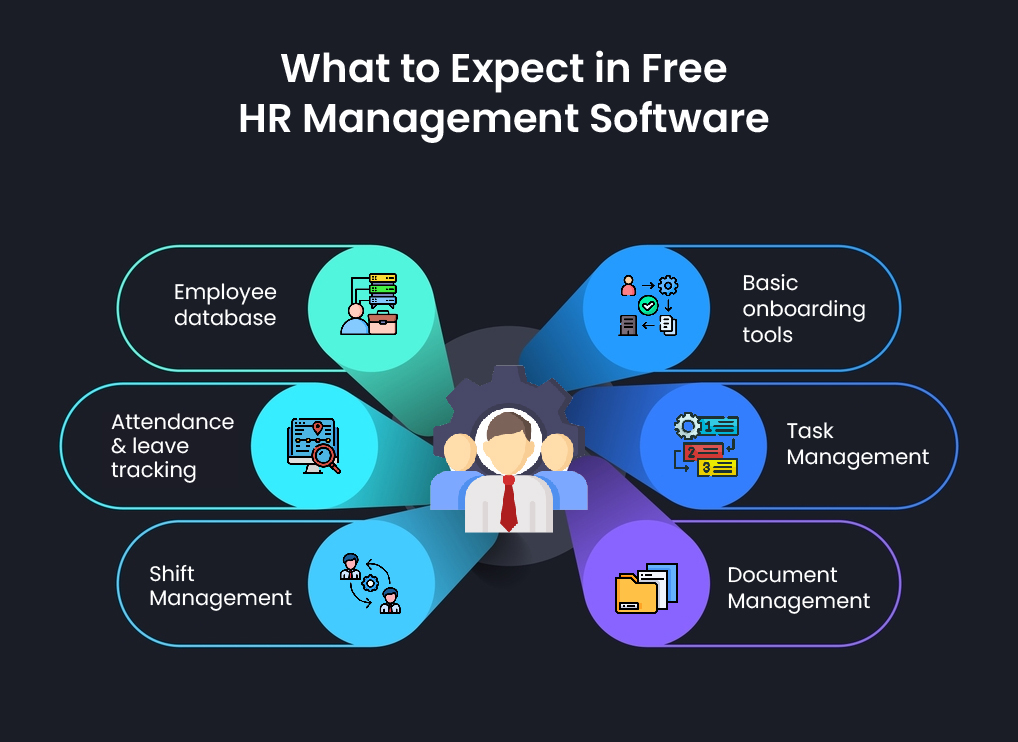
Free HR management software options offer various capabilities across the employee lifecycle, though features may vary between platforms. Understanding these common components helps determine if they can adequately support your organisation through the diverse phases of employee management.
Employee database
This is the most essential feature you would expect in the best free hr management software for startups in 2025. An employee database simplifies access to important employee information by acting as an easy-to-access single source of data.
Attendance & leave tracking
A simple-to-use employee tracking system for attendance and leave could simplify the monitoring and management of each employee's work hours, attendance, and leave requests. Attendance tracking is a ubiquitous feature in most free employee management software systems these days.
Shift management
It becomes an additional expense if you have to invest separately in staff scheduling software. An ideal employee management system must include shift management as a core feature because it can't be considered an optional feature.
Basic onboarding tools
Top-rated free HR tools for small companies often incorporate basic onboarding tools. When starting out, this is something you shouldn't overlook.
Task management
We can call HR automation software truly dependable when it's equipped to handle everyday HR tasks/responsibilities. E.g., assigning onboarding tasks, tracking document submissions, setting deadlines, and monitoring progress. All of which are essential for smooth employee management.
Document Management
The capability to store essential employee and company-related files is a must-have requirement in human resource management systems. While enterprise-level systems offer extensive storage options, free versions typically provide limited storage.
Pros And Cons of Using Free HR Management Software
| Pros | Cons |
|---|---|
| Cost-effective, no upfront investment | Lacks advanced HR features like payroll management |
| Covers basic HR lifecycle tasks | Limited number of user accounts |
| Quick setup for small businesses | Minimal customisation options available |
| Scalable with paid upgrade options | Poor integration with other tools |
| Automates basic manual processes | Weaker data security measures |
| Access HR data from anywhere | Limited or no customer support |
| Supports basic regulatory compliance | Storage and retention restrictions |
| Good for learning before investing | Contains ads or promotions frequently |
Who Should (and Shouldn’t) Use Free HR Management Software?
Is free HR management software ideal for every business? The simple answer is no. While it works well for startups, small businesses, and companies with under 50 employees, larger organisations and enterprises that require advanced analytics, AI tools, or automated regulatory compliance should opt for premium employee management systems.
To Finish Up
Free HR management software can cover most employee lifecycle needs for small to mid-sized teams. They are great for getting started and testing the waters before investing in expensive solutions. However, it is important to note that there is no such thing as 100% free forever best HR management software. Most free options either come with very limited features or require you to upgrade to a paid version to unlock advanced features.
Are You Looking for Affordable HR Management Solutions for Growing Businesses? Try Mewurk Today!
Mewurk is a leading workforce management solution that supports over ten key employee lifecycle needs, including attendance tracking, leave management, shift scheduling, payroll processing, onboarding, task assignment, document management, compliance tracking, and more.
We don't offer free HR management software, but we're excited to let you try it at no cost for up to a year. Get familiar with its features, benefit from free training, and experience the convenience it offers. If it turns out to be the right fit for your needs, you can upgrade to the paid version and continue enjoying its full capabilities.
Most Popular Post
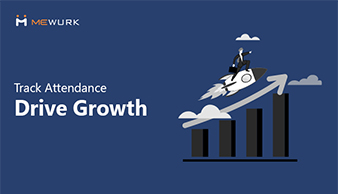
Why Accurate Attendance and Leave Management Matters for Business Growth?
Read More →Why Accurate Attendance and Leave Management Matters for Business Growth?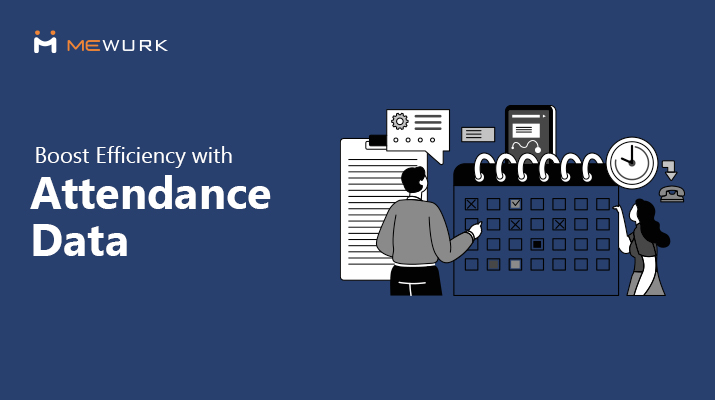
How To Leverage Attendance Data For Better Workforce Management?
Read More →How To Leverage Attendance Data For Better Workforce Management?